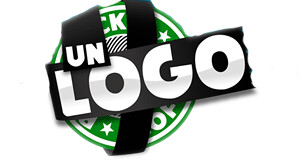
It’s been nearly four years since the city of São Paulo, Brazil, voted — nearly unanimously — to ban advertising in public spaces.
While the U.S. advertising industry was indifferent to this far-away backlash, I thought it was intriguing. In a May 2007 column, I wrote that it’s a good idea for the advertising industry to voluntarily rein in its own addiction, and begin instituting boundaries, particularly in public spaces.
My rationale was that it’s one thing for advertising clutter to overwhelm opt-in media channels, like television, Web sites, radio channels or print. In these venues, people can simply choose to opt their attention out. But advertising clutter in public spaces is often unavoidable. Many media venues have become an advertising tragedy of the commons, yet public spaces have the most potential to be invasive.
I haven’t thought too much about this ban on advertising until recently, when I read a column in The New Scientist on efforts to use technology to remove corporate logos from view.
According to the piece, several technology-inspired artists and innovators are subverting corporate branding with augmented reality, a technology by which virtual information is overlain on the real world through smart glasses or other means.
For example, Unlogo, an open-source Web service, eliminates logos from videos. According to Unlogo’s Web site, “it takes back your personal media from the corporations and advertisers…[it] gives people the opportunity to opt out of having corporate messages permanently imprinted into the photographic record of their lives.”
Then there’s Artvertiser, another open-source project which replaces billboard advertisements with art in real time through a pair of smart glasses. According to Artvertiser’s Web site, it works by teaching computers to “recognise” individual advertisements so they can be easily replaced with alternative content, like images and video.
Finally, there’s Jan Herling from the University of Technology in Ilmenau, Germany, who introduced Diminished Reality, a software system that deletes entire objects, such as logos, from video.
These technologies — so far — are niche science and art projects. But like the backlash in São Paulo, their emergence and passionate developers reflect underlying dissonance. And the simplicity and grass-roots mobility of these technologies suggest a low barrier and some likelihood of breaking into the mainstream in some form.
For advertisers, this trend underscores how increasingly important it is to build a beloved brand that people want to opt into — versus tune out, or erase altogether.
This also was my last column in MediaPost.
(Photo credit: Unlogo)

Max, why is this your last column? Get fired or quit? 🙂
I should’ve said “latest”.